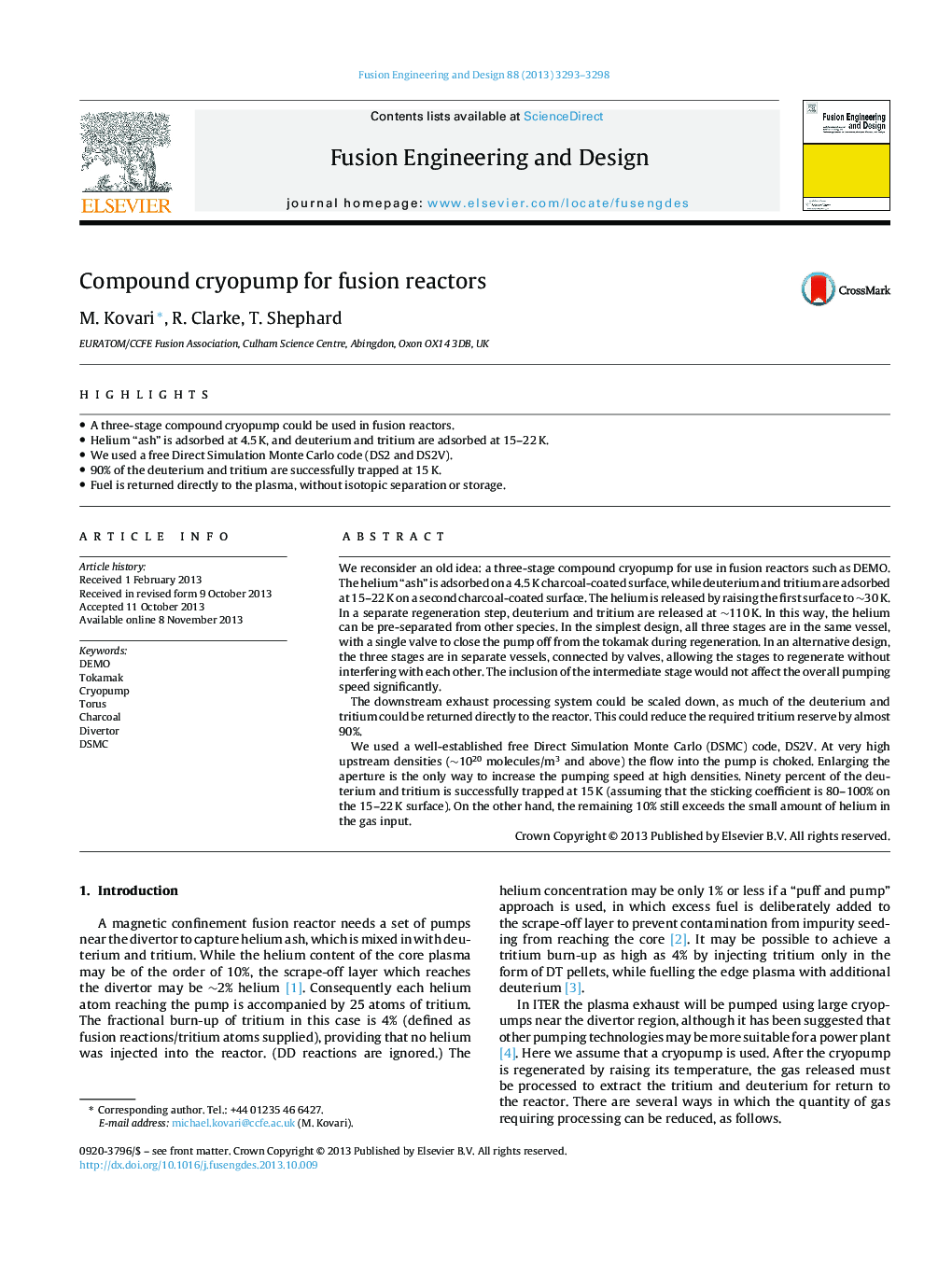| کد مقاله | کد نشریه | سال انتشار | مقاله انگلیسی | نسخه تمام متن |
|---|---|---|---|---|
| 271143 | 504989 | 2013 | 6 صفحه PDF | دانلود رایگان |

• A three-stage compound cryopump could be used in fusion reactors.
• Helium “ash” is adsorbed at 4.5 K, and deuterium and tritium are adsorbed at 15–22 K.
• We used a free Direct Simulation Monte Carlo code (DS2 and DS2V).
• 90% of the deuterium and tritium are successfully trapped at 15 K.
• Fuel is returned directly to the plasma, without isotopic separation or storage.
We reconsider an old idea: a three-stage compound cryopump for use in fusion reactors such as DEMO. The helium “ash” is adsorbed on a 4.5 K charcoal-coated surface, while deuterium and tritium are adsorbed at 15–22 K on a second charcoal-coated surface. The helium is released by raising the first surface to ∼30 K. In a separate regeneration step, deuterium and tritium are released at ∼110 K. In this way, the helium can be pre-separated from other species. In the simplest design, all three stages are in the same vessel, with a single valve to close the pump off from the tokamak during regeneration. In an alternative design, the three stages are in separate vessels, connected by valves, allowing the stages to regenerate without interfering with each other. The inclusion of the intermediate stage would not affect the overall pumping speed significantly.The downstream exhaust processing system could be scaled down, as much of the deuterium and tritium could be returned directly to the reactor. This could reduce the required tritium reserve by almost 90%.We used a well-established free Direct Simulation Monte Carlo (DSMC) code, DS2V. At very high upstream densities (∼1020 molecules/m3 and above) the flow into the pump is choked. Enlarging the aperture is the only way to increase the pumping speed at high densities. Ninety percent of the deuterium and tritium is successfully trapped at 15 K (assuming that the sticking coefficient is 80–100% on the 15–22 K surface). On the other hand, the remaining 10% still exceeds the small amount of helium in the gas input.
Journal: Fusion Engineering and Design - Volume 88, Issue 12, December 2013, Pages 3293–3298